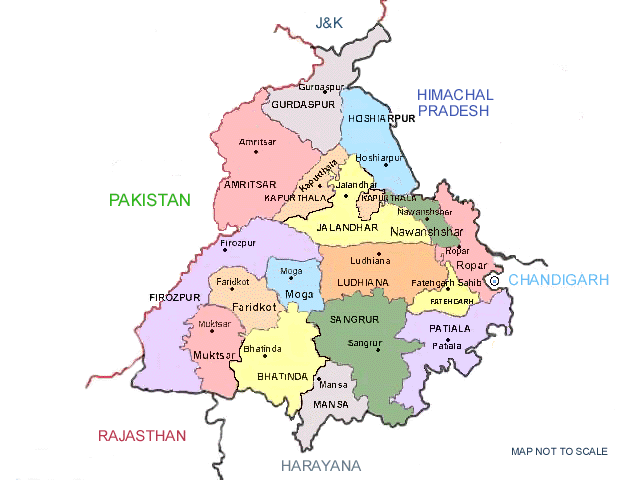CITIES IN PUNJAB
Punjab the land of five rivers and integrated cultural history, is a treasure trove for an avid tourist. For this land of the great Gurus not only boasts of ancient monuments but throbs with historical embodiments. It is no secret that whoever comes to this land of golden yellow fields with Blue Mountains providing the romantic and picturesque backdrop has never gone back without imbibing the essence of Punjab. There is no dearth of breathtaking places, for Punjab was the seat of royalty, as the imposing Quila Mubarak will tell you. Museums Galore and so are the religious places with the Golden Temple offering soccour to the mind and the soul of anyone visiting. If you are a wild life freak, then Punjab can take you on a tour of sanctuaries, which are hot favorites with the migratory birds. Since the state borders Pakistan, there are two main posts from which you can peep into the land, which was once the integral part of Punjab, and experience the feelings of people separated by a line drawn by mankind.
The much truncated India’s portion of present Punjab is divided into three natural regions: The Mujha, The Doaba and the Malwa.
MAJHA
Majha starts northward from the Right Bank of river Beas and stretches upto the Wagha village, which marks the boundary between India and Pakistan. Majha in Punjabi means the heartland. The region is divided into two districts,
DOABA
The Doaba of Punjab is bounded by the Rivers Sutlej in the south and Beas in the north. The area is divided into four districts Jalandhar, Nawanshahar, Kapurthala and Hoshiarpur named after these main towns.
MALWA
The area South of the river Sutlej is called Malwa. Th stuck because a clan called Molois (sometimes Malawis in ancient works) once ruled this area which have spread upto the present State of Gujrat which known as the Subah of Malwa as late as the Mughul times. Malwa the largest part of the Punjab is divided into the following 12 districts after the names of their headquarters.
